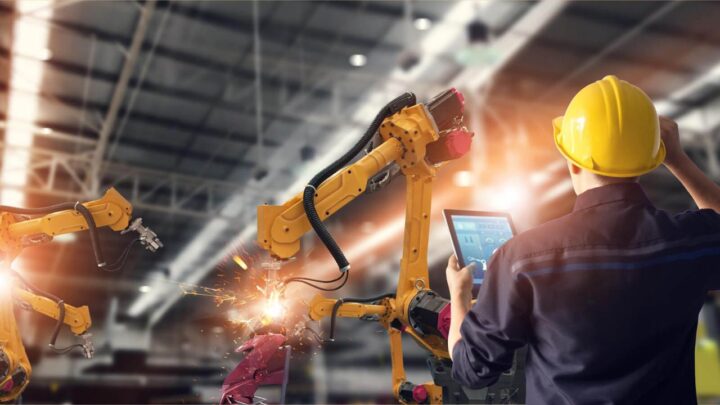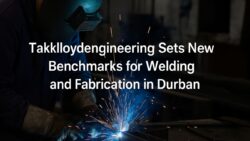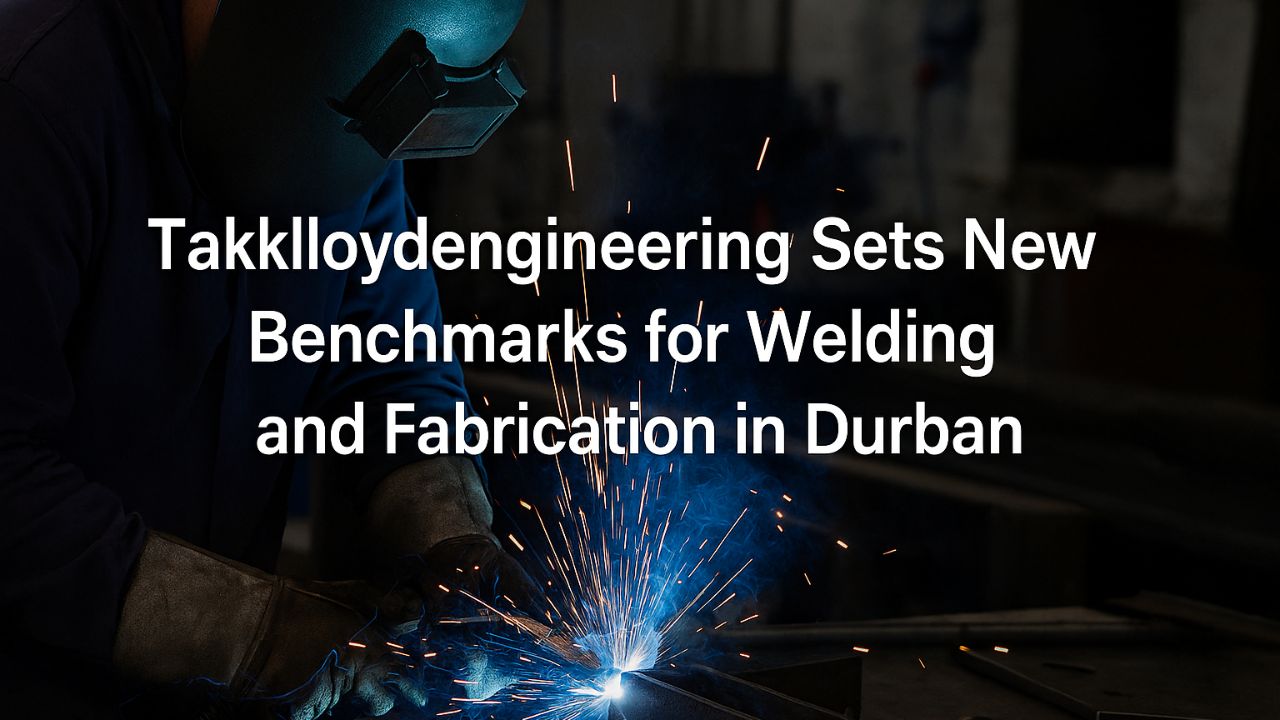Robotics and AI in Welding and Fabrication – Durban, a key industrial hub of South Africa, is undergoing a significant technological transformation. The city’s leading welding and fabrication companies are now shifting from traditional methods to highly sophisticated, AI-driven and robotic solutions. The reason? To meet international-grade metalwork standards and remain competitive in the global supply chain. This evolution marks a critical moment for Durban’s manufacturing and engineering sector, which is now embracing automation to achieve enhanced accuracy, faster turnaround times, and scalable operations. Earlier, welding and fabrication involved manual labor, inconsistent results, and slow project cycles. But the adoption of robotics and AI has introduced smarter, safer, and more cost-effective workflows that benefit not only manufacturers but also their global clients. This shift is creating new job roles, upskilling opportunities, and setting new benchmarks in South African industry quality.
Rise of Robotics in Welding and Fabrication
Over the past five years, robotic welding arms and AI-integrated machines have replaced human-only welding tasks in many Durban-based factories.
Benefits of Robotics in Welding:
- Precision & Consistency: Robotic arms deliver consistent welds with minimal defects.
- Speed: Jobs that took days can now be completed in hours.
- Safety: Workers are no longer exposed to hazardous fumes and arc flashes.
- Less Waste: AI-powered systems optimize materials and reduce scrap metal.
- 24/7 Operations: Robots don’t need breaks, making continuous production possible.
Industries Benefiting:
 NSFAS August 2025 Bursary Alert – New Eligibility Rules Could Disqualify Thousands of Students
NSFAS August 2025 Bursary Alert – New Eligibility Rules Could Disqualify Thousands of Students
| Industry | Application of Robotic Welding | Efficiency Gained (%) |
|---|---|---|
| Automotive | Chassis & frame welding | 40–60% |
| Construction | Steel beam & pipe fabrication | 35–50% |
| Shipbuilding | Hull & joint welding | 45–55% |
| Renewable Energy | Wind turbine & solar panel structures | 30–45% |
| Railways | Train body welding & undercarriages | 50–65% |
| Mining Equipment | Heavy machinery component welding | 40–50% |
| Aerospace | Precision metalwork for aircraft | 60–70% |
| Agriculture Tools | Tractor and plough component welding | 30–40% |
AI Integration in Metalwork Workflows
Artificial Intelligence is being used not only in welding arms but also in designing, quality control, and material usage.
Key AI Applications:
- CAD Automation: AI algorithms auto-generate optimal weld patterns from blueprints.
- Smart Monitoring: Sensors and vision systems detect anomalies during welding.
- Predictive Maintenance: AI identifies machine wear & tear before breakdown.
- Material Analysis: AI suggests the best alloys for strength and cost-efficiency.

Durban Metal Revolution
Comparison Table – AI vs Manual Metalwork Planning:
| Feature | Manual Process | AI-Powered Workflow |
|---|---|---|
| Design Interpretation | Takes hours | Done in minutes |
| Error Detection | Post-process only | Real-time during welding |
| Material Usage Efficiency | 60–70% | 90–95% |
| Human Error Probability | High | Low |
| Rework Requirement | Frequent | Minimal |
How Durban Companies Are Adopting These Technologies
Durban-based SMEs and large industrial players are investing in modern equipment through government-backed tech upgradation schemes and foreign partnerships.
Key Adoption Trends:
- Tech Partnerships: Collaborating with German and Japanese robotic firms.
- Skilled Workforce Training: Upskilling welders into robot programmers and AI operators.
- R&D Investments: In-house development of smart welding solutions.
- Incentives: Government subsidies for tech modernization under Industrial Policy Action Plan (IPAP).
Challenges in Transition and Overcoming Them
While the benefits are immense, the shift to robotics and AI isn’t without hurdles.
Major Challenges:
- High Initial Investment
- Resistance to Change from Workers
- Skill Shortage in Automation Technologies
- Maintenance and Repair of Advanced Machines
Solutions Being Implemented:
- Training Programs: Offered by Technical and Vocational Education and Training (TVET) colleges.
- Public-Private Partnerships: To co-finance robotics procurement.
- Vendor Support Models: OEMs offering long-term servicing contracts.
- Job Redesign: Shifting roles from operators to supervisors/programmers.
Global Impact and Export Potential
Durban’s fabrication industry is now aligned with ISO welding standards and is exploring export opportunities.
Export-Ready Product Segments:
| Product Type | Primary Export Destinations | Quality Certification |
|---|---|---|
| Automotive Parts | Europe, USA | ISO 3834, AWS D1.1 |
| Structural Steel Frames | UAE, Australia | EN 1090, ISO 9001 |
| Mining Equipment Chassis | Zambia, Botswana | ISO 9606-1, CE Mark |
| Prefab Metal Buildings | Mauritius, Kenya | SANS, AISC Certification |
| Wind Turbine Housings | Germany, Denmark | IEC 61400, ISO 14001 |
Durban companies are showcasing their capabilities in global expos and attracting outsourcing contracts, further validating their technological maturity.
Future of Welding Careers in a Robotic Era
Despite fears of job loss, the welding and fabrication sector is actually creating higher-value jobs with more safety and pay.
Emerging Career Roles:
- Robot Welding Programmer
- AI Data Analyst – Metal Fabrication
- Welding Quality Control Inspector
- Robotic Maintenance Technician
- Industrial Automation Specialist
TVET colleges and industry partners in Durban are launching short courses and certifications to prepare young talent for this automation-driven future.
FAQs
Q1. Are robots replacing human welders in Durban?
No, robots are assisting and complementing humans. Workers are being upskilled to operate and maintain robots.
Q2. How expensive is it to adopt robotic welding in small workshops?
While initial investment is high, government subsidies and leasing options are helping small businesses transition.
Q3. Can AI predict welding defects before they happen?
Yes, AI with sensor integration can predict and alert about potential defects in real-time.
Q4. Is the quality of robotic welding better than manual welding?
In most high-precision tasks, robotic welding offers superior consistency and quality.
Q5. What qualifications are needed to work in robotic welding jobs?
Technical training in welding plus short-term certifications in robotics or automation is usually sufficient.





